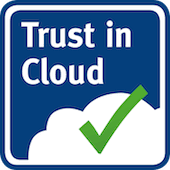Virtual Machine (VM)
A Virtual Machine (VM) is a software-based environment that emulates the functionality of a physical computer. It allows operating systems and applications to run in an isolated environment while sharing the underlying hardware resources — such as CPU, memory, storage, and network — of the host system.
What is a Virtual Machine
A virtual machine is created using a specialized program called a hypervisor, which manages the allocation of physical resources among multiple independent environments. Each VM operates like a standalone computer with its own operating system, drivers, settings, and file system.
Every VM is isolated from the host system and from other virtual machines, which ensures security and stability — even if one VM fails, the others continue to function without interruption.
How a Virtual Machine Works
The hypervisor is the core component of virtualization. It allocates the server’s physical resources among virtual machines, creating separate virtual environments for each. There are two main types of hypervisors:
- Type 1 (bare-metal) – installed directly on the server hardware, offering high performance and reliability (e.g., VMware ESXi, Microsoft Hyper-V, Proxmox VE).
- Type 2 (hosted) – runs inside an existing operating system, commonly used on workstations (e.g., VirtualBox, VMware Workstation).
Virtual machines share the same physical hardware but operate independently, making it possible to run multiple servers or applications on a single physical device.
Use Cases
Virtual machines are widely used in:
- Data centers and cloud platforms – for hosting client servers and SaaS solutions;
- Testing and development – for creating isolated environments with different OS configurations;
- IT security – for analyzing malware in a controlled environment;
- Education and training – for demonstrating system operations without using real hardware.
VMs are also used for system migration and infrastructure optimization, helping businesses reduce costs associated with maintaining multiple physical servers.
Advantages
Key advantages of virtual machines include:
- Isolation – each VM operates independently of the host and other VMs;
- Resource efficiency – a single physical server can host dozens of virtual machines;
- Flexibility – environments can be easily created, cloned, or scaled;
- Security – failures or infections in one VM do not affect others;
- Convenient testing – safe testing of new configurations and software.
Virtualization has become the foundation of cloud computing and modern IT infrastructures, enabling resource allocation on demand and efficient scaling.
Frequently Asked Questions (FAQ)
A physical server is actual hardware running a single operating system. A virtual machine is a software-based version of a server that operates on shared hardware with other VMs. It’s isolated but uses the same physical resources through the hypervisor.
A hypervisor is software that creates and manages virtual machines. It allocates CPU, memory, disk, and network resources among VMs and ensures their independence. Without a hypervisor, virtualization would not be possible — it acts as a layer between hardware and guest systems.
Yes, almost any OS can be installed. You can run Windows, Linux, BSD, macOS (within licensing limits), or even older systems for testing. This flexibility is especially useful for developers and administrators who need to work across different platforms without purchasing extra hardware.
A virtual machine emulates a complete computer with its own OS, while a container shares the host system’s kernel. Containers are lighter and faster to start but provide less isolation. VMs are ideal for complex systems requiring full isolation, while containers are better suited for microservices and DevOps environments.






